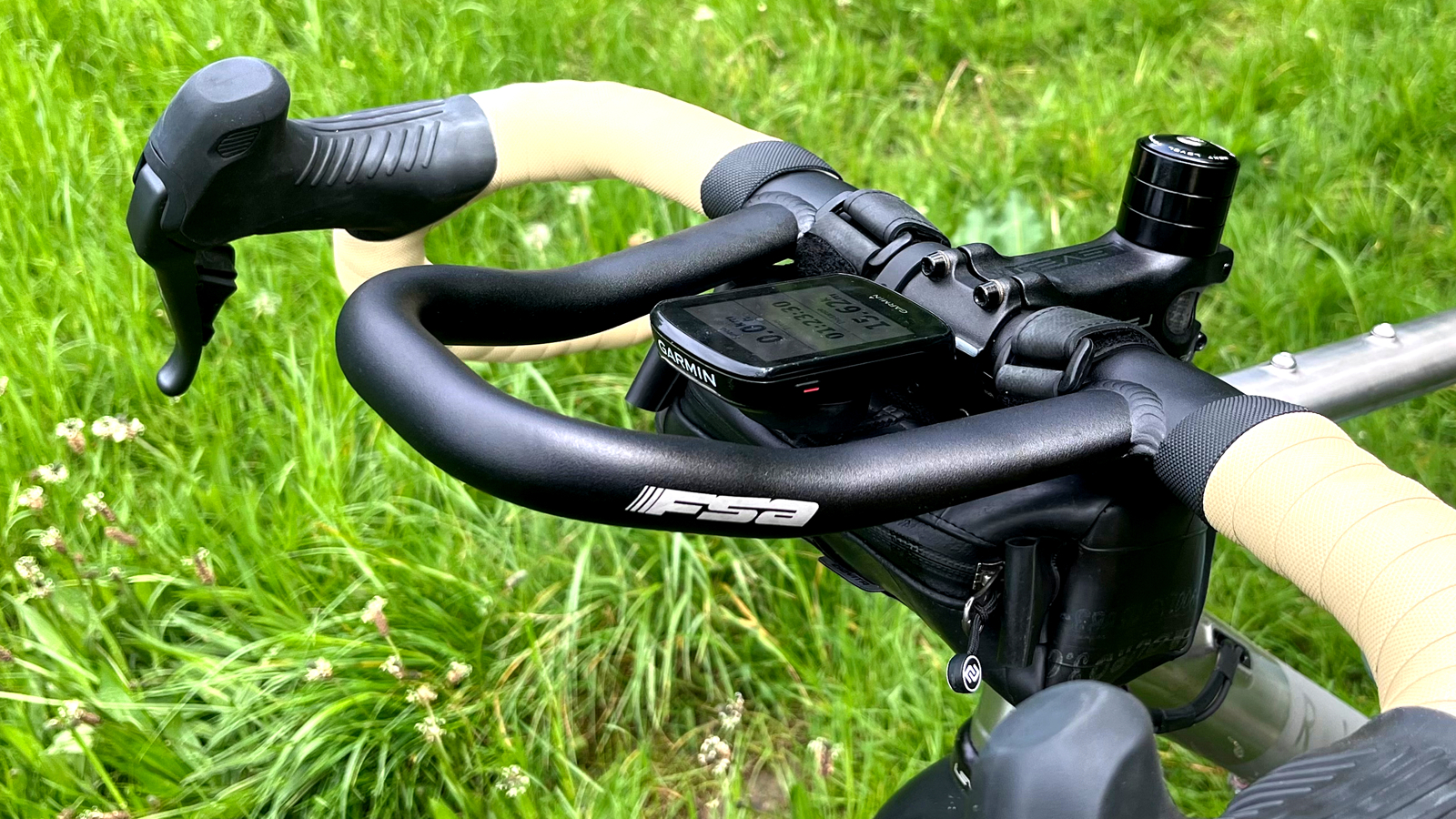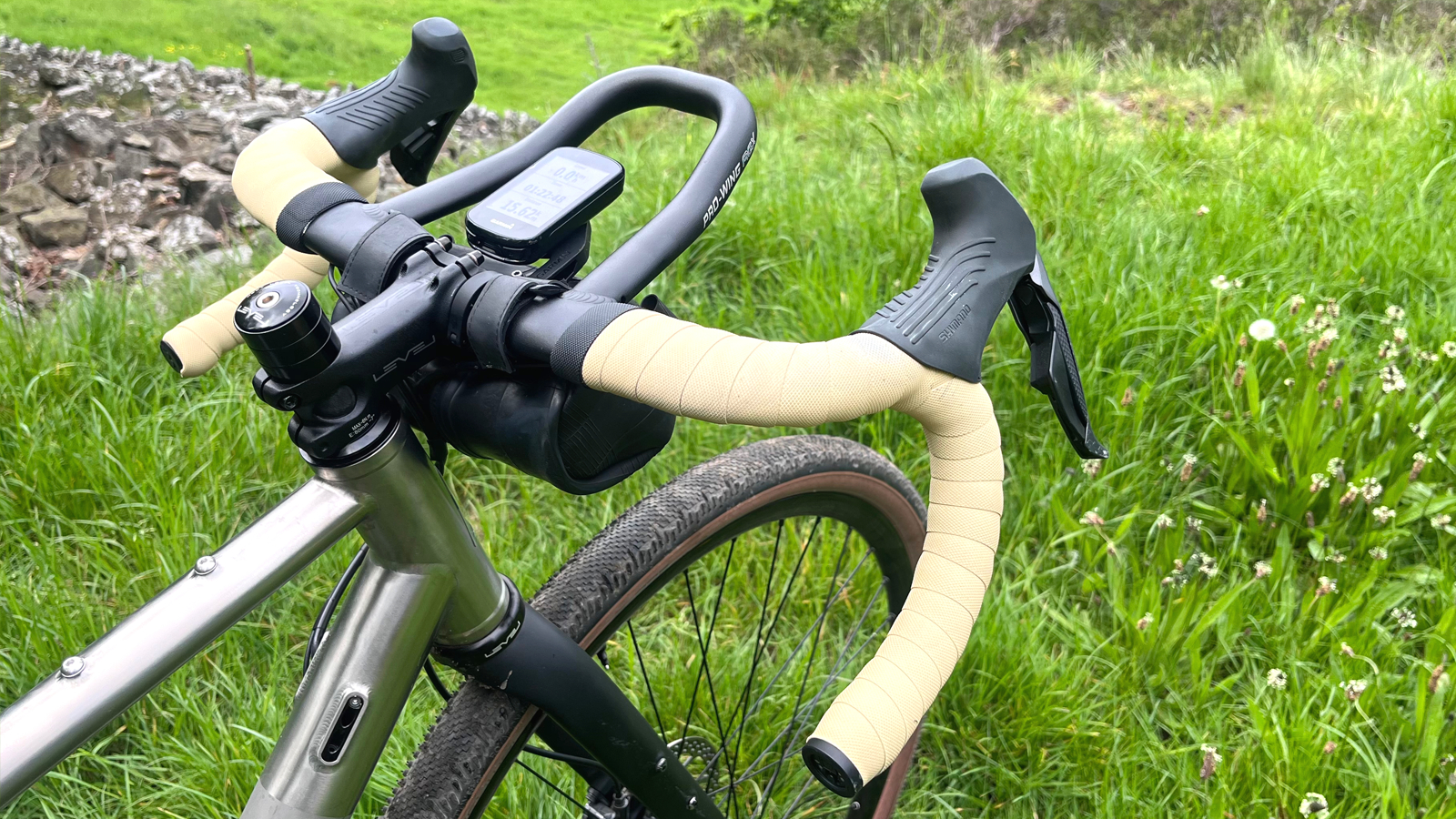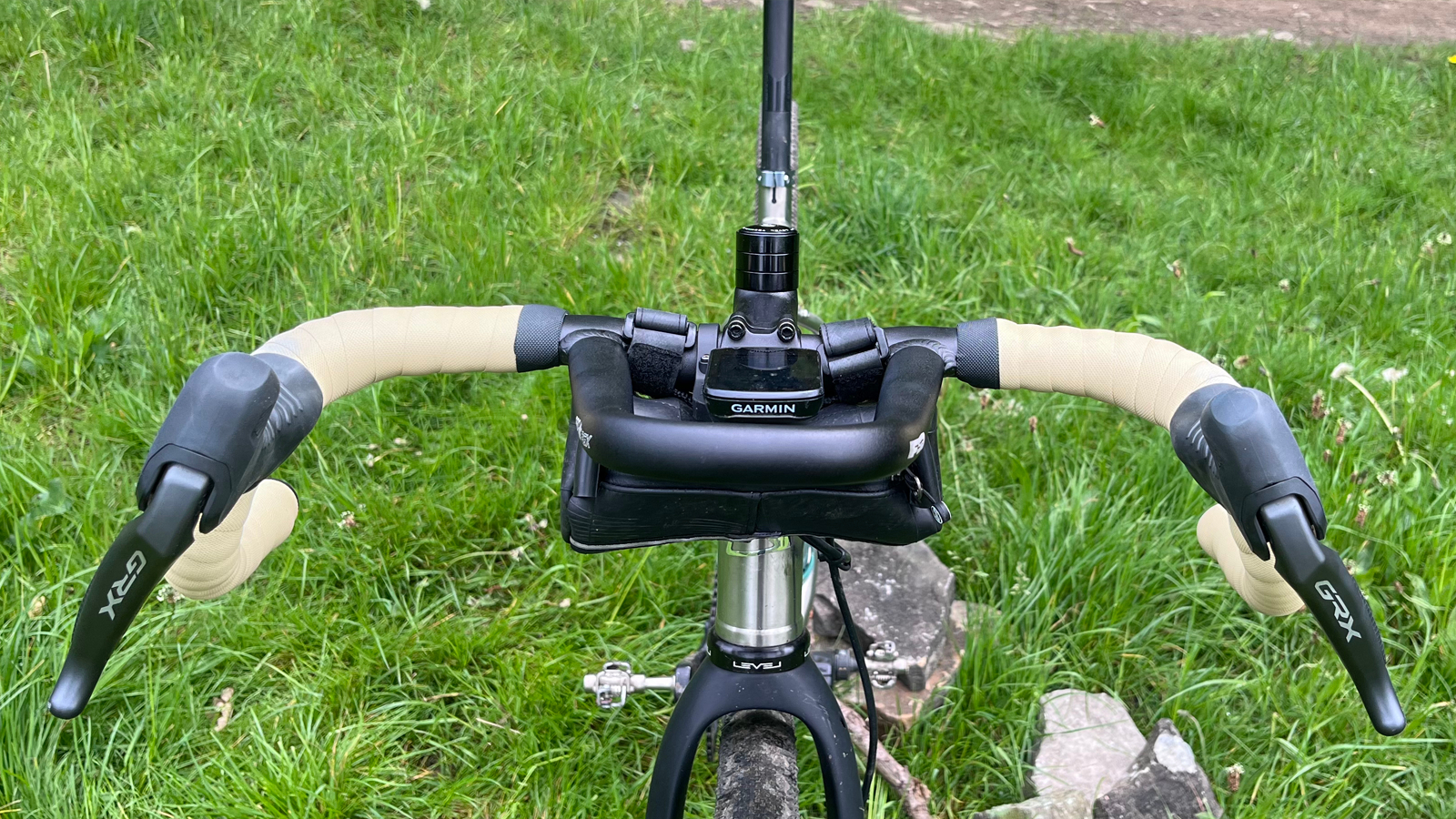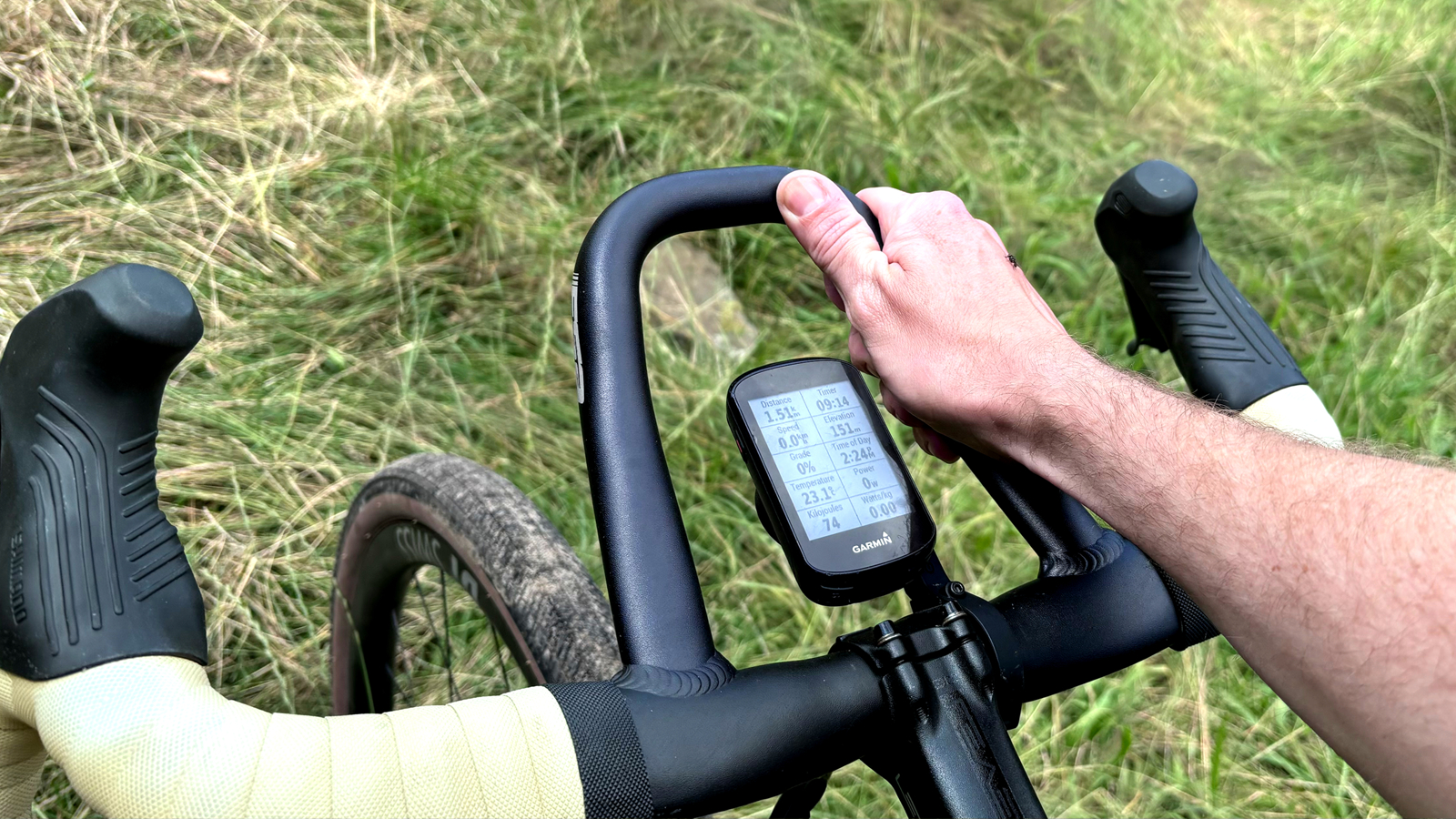
Full Speed Ahead, or FSA as they are usually referred to, has been making drop bars for many years now, and the Pro Wing Loop AGX aims to be one of the best gravel handlebars out there. With the gravel race scene growing year after year, it was inevitable that some of the road world's obsession with aerodynamics would start to play a part, but is a handlebar with a fixed alloy extender loop the right solution?

Design and specifications
As one of the first brands to use the now almost standard compact or semi-compact bend on road bikes back in the early 2000s, it’s no surprise to see them use the shape here. These have an even shallower drop of 120mm over the more common 128 or 130mm. The drop refers to the measurement from the top section to the lower or dropped section and varies from brand to brand. A shallower drop means a less extreme transition from the lever hoods to the lower section, which is helpful on technical trails or fast descents when changing positions and ensures you have your hands off the bars for the shortest possible time.
As with most gravel bars, the drops are flared, bending outwards from the lever hood section. This gives you a wider position when in the drops, significantly increasing leverage and control and stopping your forearms from banging the top sections on rough sections. I would describe these as medium flare at 25 degrees and are available in 31.8mm diameter and three widths of 42, 44, or 46cm. The width is measured from the hoods section of the bar, unlike a traditional road bar that's measured from the center of the extended drop section. This gives a comparable measurement, making replacing your current bars easier. I had the 42cm version on test, and due to the flare, they actually measured 53cm at the bottom of the drops section.

All of that is pretty standard stuff. What really sets this set of bars apart is its U-shaped alloy section, which acts like a Tri or aero bar and offers an extra position for your hands. These are welded, so they offer no adjustment, but that does mean they won't slip, which can happen when using a bar designed for road use. The extended section starts horizontally but rises slightly two-thirds of the way down the bar to give a slightly raised position compared to the tops of the bar.
Cables are internally routed with a reasonably small entry and exit hole. However, as these are alloy and not carbon, there's no leftover plastic from the molding process inside, which made fitting cables a bit easier. At 382 grams in the 42cm version tested, it's not the lightest, but it isn't ridiculous when you compare it to a standard bar and additional tri-bar set-up. It's not particularly cheap either, but comparable in cost to additional clip-on tri bars, though not as flexible at $142.90 / £199 / €179.

Performance
Fitting was pretty straightforward. The Park Tool IR-1.3 made short work of feeding the hose and Di2 cables through on my Ribble Gravel Ti Pro setup. Positioning the lever hoods took me a little longer than usual, which had nothing to do with the bar's design; it was more me getting used to flared bars and angled levers after 25 years of having my levers in pretty much the same position on 42cm drop bars.
The tri-bar or extension on the AGX is the first thing you notice when fitting, and I must admit I was a little unsure at first. I've spent many an hour on a TT or Triathlon bike in the past, so I'm well used to the position, but they rely on a raised position relative to your normal bar and some form of armrest to support your forearm, none of which you get here. So those of you looking for a genuinely aero position will be better served to fit a short clip-on or ITU bar with padded armrests (ITU triathlon bars are shorter and work better in a traditional road or gravel seated position), but for most of us, I think these offer a very useable extra position.
Instead of considering these as aero bars, I thought of them more as central lever hood positions once I had gotten used to them. When you grip the extensions, your arms and body are in a very similar position to being on the lever hoods, but with your arms and hands more inboard towards the stem, which is a position I found really comfortable on longer smooth climbs and when cruising along the flat (whenever it was safe to do so of course). There will also be an aero benefit to that, but in all honesty, it would be too small to make a difference to most of us in all bar the most substantial headwinds.
The extra bar section also gives extra mounting possibilities when fitting a bar bag, though that, of course, depends on your bag. I used both a small Ciovita bag and a large AlpKit version that worked well, but something like the custom bag from Italian Moto brand Givi, which was on display at the recent Garda bike show, with its extra straps that mount to the extensions as well as the traditional bar mounting points, would be even better.
It's not super light, but it's reasonable, and it's less of an issue on a bar designed for bikepacking and not specifically for racing. For me, the energy-saving and comfort benefits of having more comfortable riding positions far outweigh a few grams over the course of a long ride. FSA makes no claims about flex or inbuilt comfort, and to me, it felt plenty stiff, even on the occasional sprint in the drops on fast group rides, there was no discernable flex. It's worth mentioning, too, that FSA makes the VAS stem, which uses an interchangeable elastomer insert to dampen vibrations should you want a bit more cushioning.

Verdict
The AGX Wing Pro offers a genuinely helpful extra position for long-distance riding, though it might not be the flat-back full aero position you would expect. If you're after a fully aero upgrade, then you would be better served with a standard tri-bar set-up, but those more concerned with comfort should definitely check out these innovative handlebars. Once I'd gotten used to having the extra position, I really missed it when I went back to bikes without them.
Tech specs: FSA Pro Wing AGX loop gravel handlebar review
- Price: $142.90 / £199 / €179
- Weight: 382 grams
- Width: 420mm (tested), 440mm and 460mm
- Flare: 25 Degrees
- Sizes: 31.8mm only







